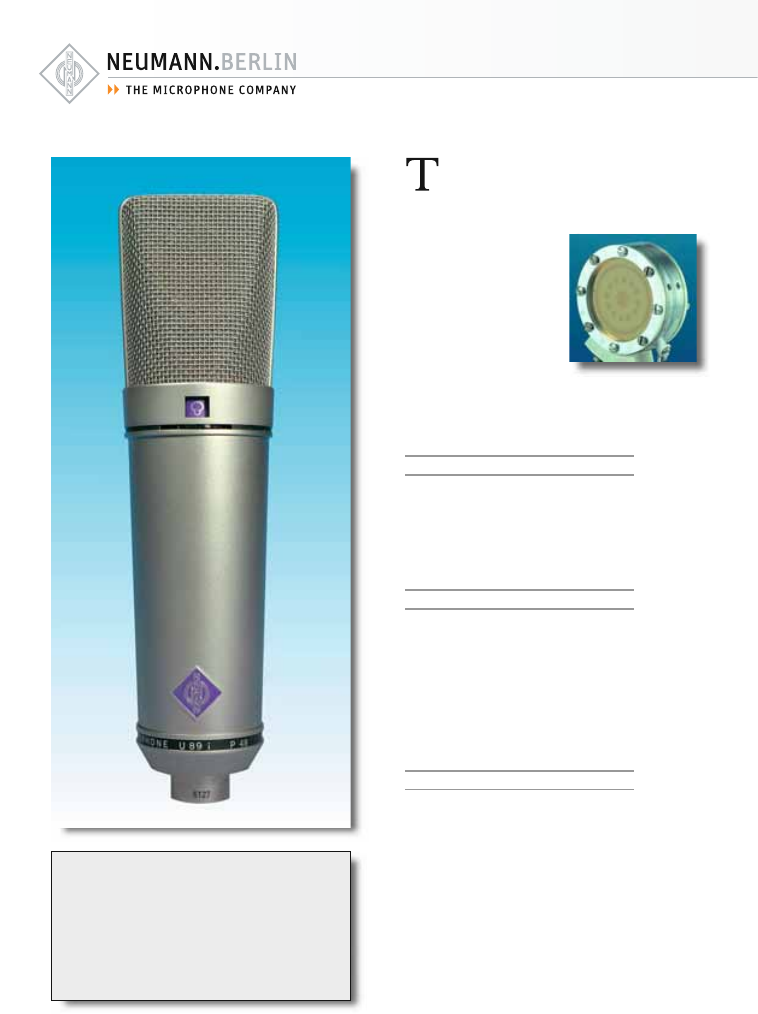
68
Features
• Variable large diaphragm
microphone
• Pressure-gradient transducer
with double membrane capsule
• Five directional characteristics:
omni, wide angle cardioid,
cardioid, hypercardioid, figure-8
• Thereby most versatile in all
recording situations
• Two-stage roll-off filter
• Switchable 6dB pre-
attenuation
• Extended frequency range in
comparison to U 87 Ai
he U 89 is a studio microphone for uni-
versal applications. The headgrille protects a
dual-diaphragm capsule. A rotary switch be-
low the headgrille selects from
five different polar patterns.
Therefore the microphone
can be adapted easily to large
sound sources, and those that
are spread wide apart, or to
sound sources to be recorded
at a greater distance.
The amplifier accepts sound
pressure levels up to 134dB
without distortion. This figure
can be increased to 140 dB. An additional ro-
tary switch activates a filter that changes the
low frequency response either below 80Hz
or 160Hz.
Applications
The U89 i is similar in appearance to the
U87. It is of smaller size, and lighter weight.
It features five instead of three directional char-
acteristics and a higher maximum sound pres-
sure level which make this microphone easier
adaptable to different applications.
Polar patterns
In addition to the usual directional polar pat-
terns: omnidirectional, cardioid, and figure-8,
we have added a hypercardioid and wide-an-
gle cardioid characteristic.
When compared to the standard cardioid pat-
tern, the hypercardioid characteristic suppress-
es sound from the side more efficiently. The
wide-angle polar pattern is especially useful to
record large sound sources.
Acoustic features
The microphone is addressed from the front,
marked with the Neumann logo. The large di-
aphragm capsule has a very smooth frequency
response for all polar patterns over a wide ac-
ceptance angle. The frequency response curves
are flat up to 10 kHz within a pickup angle of
±100°.
As a result the U89 i has a very even diffuse-
field response for all polar patterns. This is im-
portant in a reverberant environment when more
reflections arrive at the microphone capsule.
The acoustic information is not affected in its
tonal quality when recorded by the micro-
phone.
The design of the microphone is a registered design of the Georg Neumann GmbH in certain countries.


















